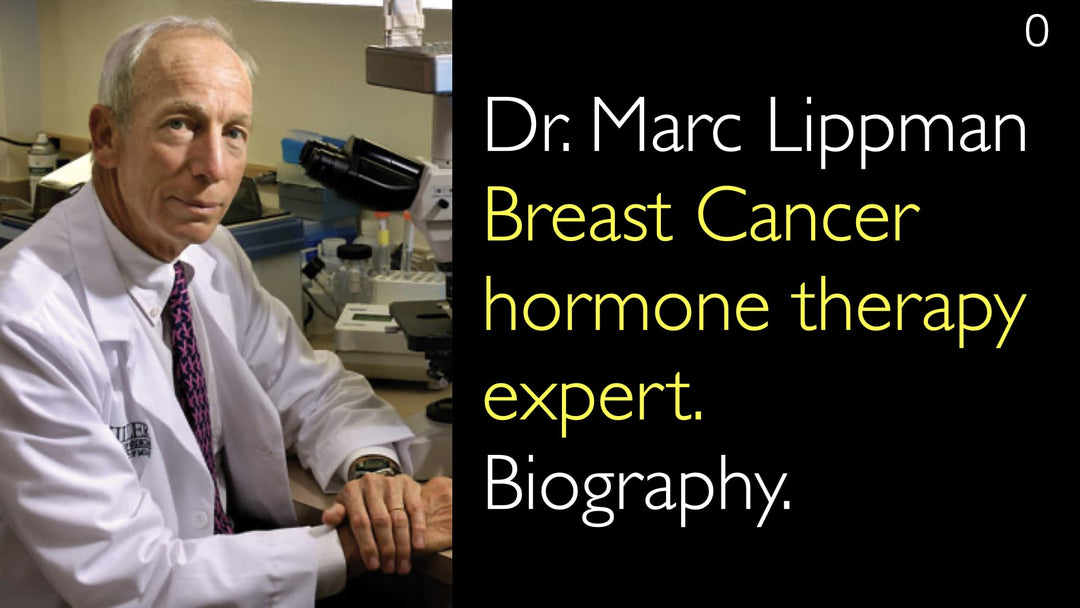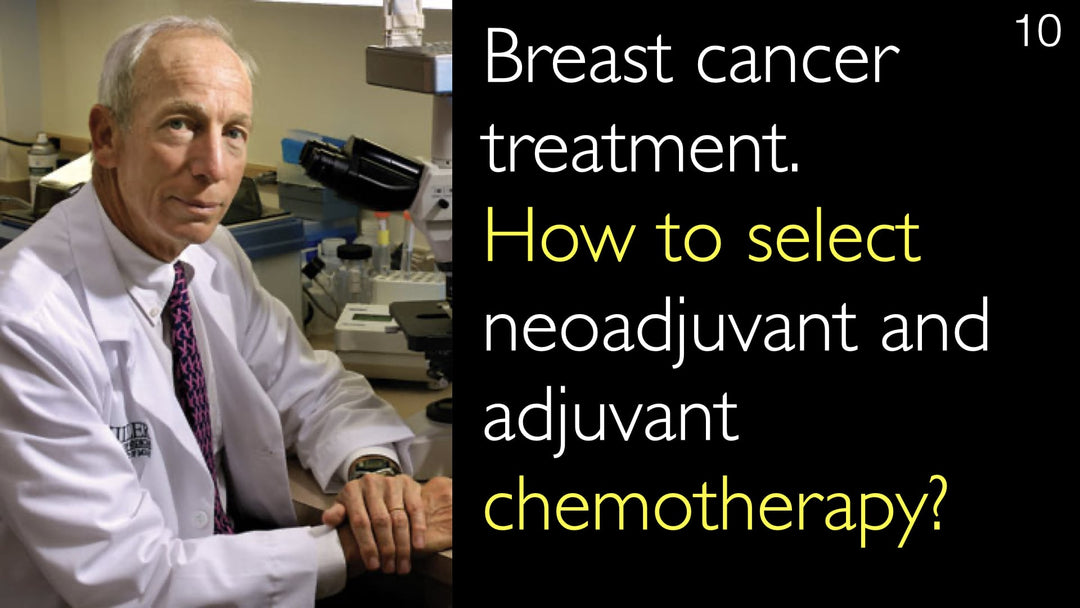Leading expert in breast cancer, Dr. Giuseppe Curigliano, MD, explains the latest treatment advances for triple-negative breast cancer, including immunotherapy, antibody-drug conjugates, and PARP inhibitors. He details the critical role of PD-L1 testing and BRCA mutation status in personalizing therapy. Dr. Curigliano also clarifies the strong indications for neoadjuvant chemotherapy and how achieving a pathological complete response is a powerful predictor of long-term survival.
Advanced Triple-Negative Breast Cancer Treatment Options and Strategies
Jump To Section
- Immunotherapy for Triple-Negative Breast Cancer
- Sacituzumab Govitecan ADC
- PARP Inhibitors for BRCA Mutations
- PD-L1 Testing Thresholds
- Targeted Therapy Challenges
- Neoadjuvant Chemotherapy Indications
- Pathological Complete Response
Immunotherapy for Triple-Negative Breast Cancer
Immunotherapy is a major breakthrough for treating triple-negative breast cancer. Dr. Giuseppe Curigliano, MD, confirms that combining chemotherapy with an immune checkpoint inhibitor provides a clear overall survival benefit for patients whose tumors express PD-L1. This approach harnesses the patient's own immune system to attack cancer cells.
Sacituzumab Govitecan ADC
Sacituzumab Govitecan is an antibody-drug conjugate (ADC) that has demonstrated significant improvement in overall survival for metastatic triple-negative breast cancer. As Dr. Giuseppe Curigliano, MD, explains, this targeted therapy delivers chemotherapy directly to cancer cells, offering a potent new option for this difficult-to-treat disease.
PARP Inhibitors for BRCA Mutations
For patients with a BRCA gene mutation, PARP inhibitors offer a targeted treatment strategy. Dr. Giuseppe Curigliano, MD, notes that in the metastatic setting, these medications provide a progression-free survival benefit. This represents a key step toward personalized medicine for a specific genetic subset of triple-negative breast cancer patients.
PD-L1 Testing Thresholds
Determining PD-L1 positivity is critical for selecting immunotherapy. Dr. Giuseppe Curigliano, MD, clarifies that the threshold depends on the specific drug used. For atezolizumab, a PD-L1 expression of more than 1% is considered positive. For pembrolizumab, a Combined Positive Score (CPS) of more than 10 is required to see a major benefit.
Targeted Therapy Challenges
A significant challenge in triple-negative breast cancer is the limited number of actionable targets beyond PD-L1 and BRCA. Dr. Giuseppe Curigliano, MD, emphasizes the importance of next-generation sequencing (NGS) but notes that findings like NTRK or RET fusions are uncommon. He hopes future deep genomic sequencing will better stratify risk and personalize treatment, potentially allowing some patients with tumor-infiltrating lymphocytes to avoid chemotherapy.
Neoadjuvant Chemotherapy Indications
Neoadjuvant chemotherapy is a standard approach for most patients with stage 2 and 3 triple-negative breast cancer. Dr. Giuseppe Curigliano, MD, states that the goal is not only to downstage the tumor for surgery but also to improve overall survival. He suggests that some patients with stage 1 disease may avoid chemotherapy altogether and proceed directly to surgery and radiation.
Pathological Complete Response
Achieving a pathological complete response (pCR) after neoadjuvant therapy is a powerful predictor of improved long-term outcomes. Dr. Giuseppe Curigliano, MD, explains that when chemotherapy is combined with immunotherapy, the pCR rate in triple-negative breast cancer can be as high as 70%. However, he notes that certain subtypes, like adenoid cystic or mucinous carcinoma, may not respond to chemotherapy but still have an excellent prognosis with local treatments.
Full Transcript
Dr. Anton Titov, MD: Triple-negative breast cancer means that the tumor doesn't express estrogen and progesterone receptors. It is also HER2/neu-negative. This breast cancer historically has been difficult to treat with the worst prognosis. What new therapies for triple-negative breast cancer are available today?
Dr. Giuseppe Curigliano, MD: Immunotherapy, for sure. If you have triple-negative breast cancer and you are expressing PD-L1 on the tumor, you can combine chemotherapy with an immune checkpoint inhibitor. There is a clear overall survival benefit.
Another approach is with Sacituzumab Govitecan. It is an antibody-drug conjugate that demonstrated an improvement in overall survival in triple-negative breast cancer. Finally, we have the opportunity to use PARP inhibitors for patients with BRCA-mutant triple-negative breast cancer. In the metastatic triple-negative breast cancer setting, you have progression-free survival benefits.
Dr. Anton Titov, MD: What level of PD-L1 expression is considered positive on the histology for breast cancer tumors?
Dr. Giuseppe Curigliano, MD: This is a very good question. If you use atezolizumab, it is for more than 1% PD-L1 expression. If you use pembrolizumab, you have a major benefit with a CPS score of more than 10.
Dr. Anton Titov, MD: It's very important because the PD-L1 scores are different for different types of tumors. What are the challenges in targeted therapy for triple-negative breast cancer?
Dr. Giuseppe Curigliano, MD: Up to now, of course, you have limited overall survival benefits. We have to do next-generation sequencing. But it's quite uncommon in breast cancer, beyond NTRK, RET, and BRCA mutations, to find other targeted therapies.
I hope in the future we will have more sensitive technology to do deep genomic sequencing. I am quite sure that for this triple-negative breast cancer patient population, maybe you can better stratify the risk and better personalize treatment.
We know that in early triple-negative breast cancer, if a patient's tumor is enriched with tumor-infiltrating lymphocytes, you have a better prognosis. So maybe in the future, with better risk stratification, it may be possible to avoid chemotherapy in some patients. We may use personalized treatment in other breast cancer patients.
Dr. Anton Titov, MD: For a new diagnosis of triple-negative breast cancer, how do you weigh doing neoadjuvant chemotherapy versus proceeding with surgery and doing adjuvant chemotherapy?
Dr. Giuseppe Curigliano, MD: Any patient with stage two and three triple-negative breast cancer should receive neoadjuvant chemotherapy. But I am quite sure that in some stage one triple-negative breast cancer patients, we may also avoid chemotherapy. We can go directly for surgery and radiation therapy.
Dr. Anton Titov, MD: The indication for neoadjuvant therapy in triple-negative breast cancer historically was for the ability to downgrade the surgical stage. What is the indication for neoadjuvant chemotherapy right now in triple-negative breast cancer and maybe in other breast cancer types? Is it purely based on the advantages for the long-term survival of patients?
Dr. Giuseppe Curigliano, MD: Of course, the aim of neoadjuvant chemotherapy is not only related to downstaging of the tumor. But potentially neoadjuvant therapy can also improve overall survival. We have many more data demonstrating that if you achieve a pathological complete response after neoadjuvant chemotherapy, there is an improved outcome also in terms of overall survival.
Dr. Anton Titov, MD: Some breast cancer tumors that have an overall better prognosis nevertheless achieve complete pathological response in a fewer percentage of cases. How does it work?
Dr. Giuseppe Curigliano, MD: In triple-negative disease, the potential of pathological complete response is close to 70% if you combine chemotherapy and immune checkpoint inhibitors. Other subtypes of triple-negative breast cancer, like adenoid cystic or mucinous carcinoma or lobular triple-negative breast cancer, usually do not derive benefit from chemotherapy. But they may also have an excellent outcome with surgery and radiotherapy.







